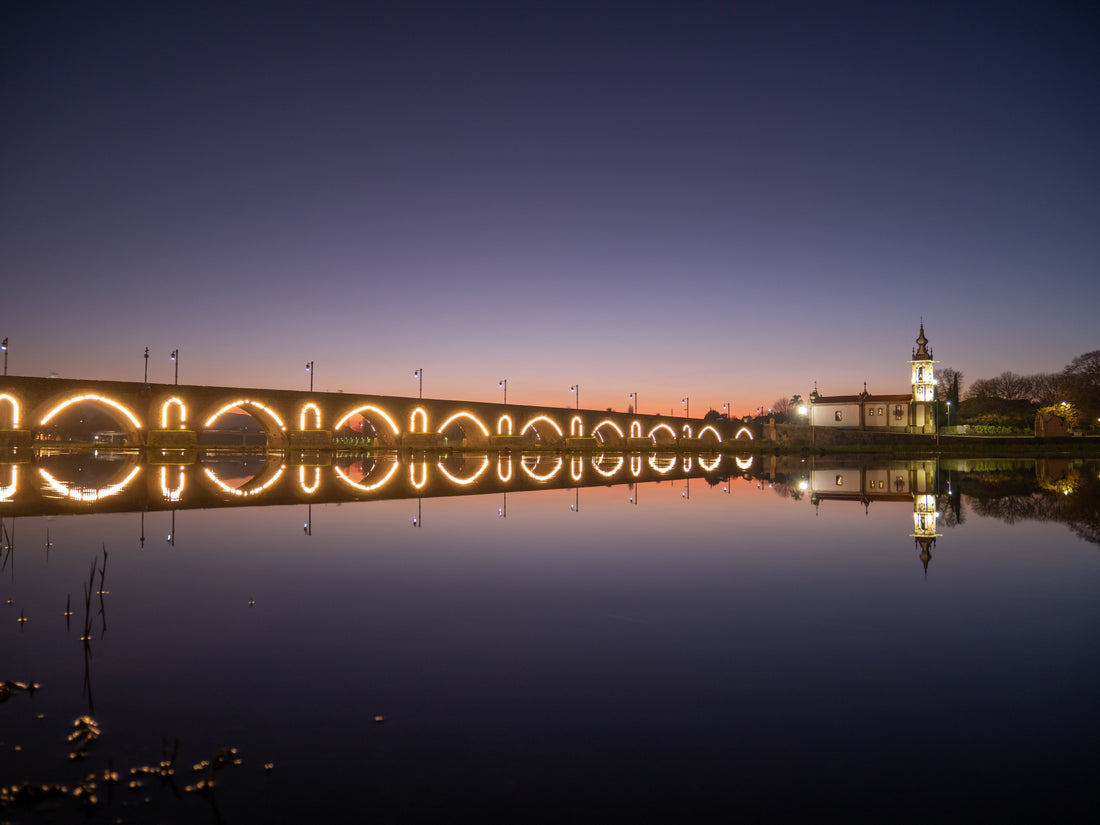
900 years of Ponte de Lima - History, gastronomy and tradition in a charming village
Share
Ponte de Lima emerged as a town in the 12th century with the granting of a charter, but its location was determined by a previous historical event: the construction of the Roman bridge. This important element of the 19th-century itinerary, which connected Braga (Bracara Augusta) to Astorga (Asturica Augusta), forever defined the future town's location at this precise point along the Lima River, approximately 25 km from the Atlantic Ocean. This forever established the central position of "Ponte" in the Lima valley, making this location, for the future, an essential transit point for armies, merchants, builders, pilgrims, and other travelers.

The systemic settlement of the population and its concentration on the left bank of the Lima River only occurred with the founding of the town by D. Teresa, starting in 1125. With the Charter of Foral, the Countess of Portucalense protected the town's inhabitants and granted them a privileged status before the tax authorities and the courts, while also encouraging the holding of the fair. In 2025, Ponte de Lima celebrates the 900th anniversary of the Charter of Foral, highlighting its unique status: that of the oldest town in Portugal.
"Ponte de Lima is also an international equestrian destination; the deep connection between the horse and the community remains to this day."
When we talk about Ponte de Lima, we inevitably allude to a set of elements that help shape its identity, which assault the spirit almost instantly and leave profound marks on the town and its inhabitants. They convey the town's history and rich reality. The centuries-old Avenida dos Plátanos is undoubtedly one of the most striking and unmistakable images of the town. Stretching parallel to the Lima River, this avenue of leafy trees, the most impressive in this region, became, as the 20th century progressed, an essential space for leisure, socializing, and commerce for the people of Ponte de Lima, also inspiring, in its various configurations throughout the year, the vision and words of artists.
And it is in this village that we find one of the greatest charms of the Minho region. Charming and enchanting, it invites you to engage in countless activities and to enjoy the blessings of Mother Nature. At various points throughout the municipality, from the hilltops, viewpoints, or down in the plains, via the extensive network of eco-paths, it is possible to admire and immerse yourself in the most significant natural elements, which most vigorously preserve the diversity of animal and floral life and also form places of unparalleled scenic beauty. From the beauty of the Lima River to the villages of Mesa dos 4 Abades, passing through the Carvalhal do Rio Trovela, Lugar da Vacariça, Monte da Nó, or Serra D'Arga, there are countless incredible places to discover, including hikes and walks, contemplating unique landscapes and forests, in the immensity of a largely rural nature.
Philharmonic bands and folklore are also part of the identity of this land, a key gateway for the Portuguese Way of St. James. Ponte de Lima is also an international equestrian destination; the deep connection between horses and the community remains to this day. Since 2007, the village has hosted the Horse Fair, one of the largest events of its kind in Portugal.
The village is proud of its vast Intangible Cultural Heritage, lived by its inhabitants and passed down to subsequent generations, not frozen in time but always evolving and subject to change. This heritage includes the "canres ao desafio" (challenge songs), the biweekly fair—one of the oldest in the country, the Feiras Novas festival, which attracts thousands of people to the village every year, and the Serrada da Velha (Old Lady's Serrada), a popular event with a long tradition in Ponte de Lima, celebrated mid-Lent.
«The flavors tasted here genuinely represent the identity of a gastronomically rich country and the entire history of a municipality.»
Those who pass through Ponte de Lima carry with them memories of what they saw, but also what they tasted. The flavors tasted here truly represent the identity of a gastronomically rich country and the entire history of a municipality. Starting with the sausages and smoked meats, so closely linked, since ancient times, to the tradition of pig slaughter, accompanied by cornbread, which every home cooked in a wood-fired oven. From there, there's the best to taste and approve: sarrabulho rice, cod with onions, Minho meat, or lamprey are unforgettable dishes. Accompanied, of course, by a good vinho verde (green wine) from the bowl.
If you hesitate, try to remember that 900 years of history isn't enough for just any village. With the added bonus, Ponte de Lima has it all: breathtaking landscapes, delicious cuisine, and tradition to live by.

Text: Carla Martins
Photos: Ponte de Lima City Council
